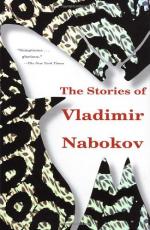|
This section contains 4,966 words (approx. 17 pages at 300 words per page) |

|
SOURCE: “Illusion, Reality, and Parody in Nabokov's Plays,” in Wisconsin Studies in Contemporary Literature, Vol. VIII, No. 2, 1967, pp. 268-79.
In the following essay, Karlinsky examines the sources of two of Nabokov's plays and their similarities to his novels.
It was Vladislav Khodasevich who in 1937 characterized Nabokov as a writer obsessed with a single theme.1 Nabokov's writings of the subsequent decades have confirmed the accuracy of this observation. Nabokov's central theme is, of course, the nature of the creative imagination and the solitary, freak-like role into which a man gifted with such imagination is inevitably cast in any society. Such a person may be shown pursuing his basic endeavor directly (e.g., Sebastian Knight or the hero of The Gift), but more often, as Khodasevich pointed out, Nabokov's artist-hero is disguised by means of some mask that may appear at first glance unrelated to artistic creation. Thus, the work...
|
This section contains 4,966 words (approx. 17 pages at 300 words per page) |

|


